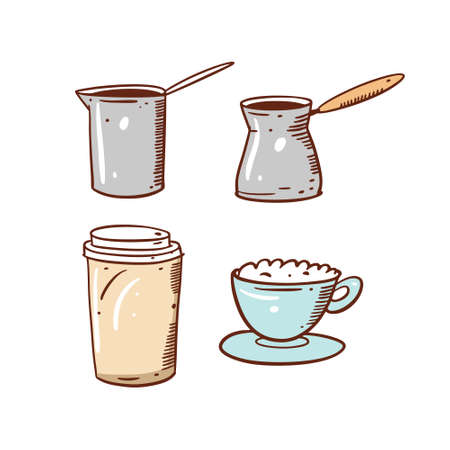Introduction to Coffee Culture in India
Coffee in India is much more than just a beverage—it is an integral part of the nation’s social fabric, woven into daily rituals, conversations, and hospitality. The journey of coffee in India dates back to the 17th century when Baba Budan, a legendary Sufi saint, is believed to have smuggled seven coffee beans from Yemen and planted them in the hills of Karnataka. Since then, Indian coffee culture has blossomed with distinctive regional flavours and traditions that reflect the country’s vast diversity. From the aromatic filter kaapi of South India served in stainless steel tumblers to the sweetened, frothy instant coffee enjoyed across urban centres, each region brings its own unique touch to coffee preparation and consumption. In bustling cities as well as rural hamlets, local cafés—known as “coffee houses”—serve as vibrant meeting points for people of all backgrounds to engage in lively debates or simply unwind. Over centuries, these traditional practices have not only shaped Indian coffee culture but also fostered a strong sense of community and belonging among its people.
2. South Indian Filter Coffee: Preparation and Tradition
South Indian filter coffee, often referred to as “kaapi,” stands as a cultural icon in the southern states of India such as Tamil Nadu, Karnataka, Kerala, and Andhra Pradesh. This style of coffee is cherished for its unique preparation method, distinct vessels, and the ritualistic approach to serving that embodies hospitality and togetherness.
Brewing Methods: The Art of Decoction
The traditional brewing process involves a metal filter, usually made of stainless steel or brass. Ground coffee beans (often blended with chicory) are placed in the upper compartment of the filter, and hot water is poured over them. The slow percolation produces a strong, aromatic decoction, which forms the base of South Indian filter coffee. This decoction is then mixed with freshly boiled milk and sugar according to personal preference.
Coffee-to-Chicory Ratio Table
| Type | Coffee (%) | Chicory (%) |
|---|---|---|
| Traditional Blend | 70 | 30 |
| Strong Blend | 80 | 20 |
| Mild Blend | 60 | 40 |
The Dabara and Tumbler: Iconic Vessels
South Indian filter coffee is traditionally served in a pair of utensils known as the dabara (or davara) and tumbler. The tumbler is a small metal glass used for drinking, while the dabara is a wider metal bowl used for cooling and mixing. The process of pouring coffee back and forth between these vessels from a height not only mixes the drink well but also cools it to a perfect sipping temperature and creates a frothy layer on top.
Dabara & Tumbler Usage Table
| Step | Description | Cultural Significance |
|---|---|---|
| Poured from Tumbler to Dabara | Aerates and cools the beverage | Enhances aroma & texture; symbolises skillful serving |
| Poured back into Tumbler for Serving | Creates signature frothy top layer (“meter coffee”) | A sign of hospitality & warmth in South Indian homes/cafés |
The Ritual at Home and in Cafés
The act of making and serving filter coffee is more than just a daily routine—it’s an expression of care, especially when guests arrive. In many households, mornings begin with the aroma of fresh filter coffee wafting through the air, accompanied by conversations around the kitchen table. Local cafés, called “coffee houses,” replicate this tradition by serving filter coffee in dabara-tumbler sets, reinforcing community bonds among regulars who gather for their morning or evening cup.

3. Instant Coffee and Its Indian Variations
Instant coffee has carved a unique space for itself in Indian households, particularly in bustling urban settings where convenience and speed are paramount. Brands like Nescafé, Bru, and Sunrise are household names, their red and green jars often lining the kitchen shelves of millions of homes from Mumbai to Chennai. The ritual is simple yet beloved: a heaped spoonful of instant coffee powder, a dash of sugar, hot milk or water, and a vigorous stir—sometimes even poured back and forth between two tumblers to create that signature froth known as “kaapi.”
The Kaapi Style: South Indias Instant Coffee Culture
While filter coffee reigns supreme in many southern states, instant coffee has become the go-to beverage for busy mornings and late-night study sessions. The Tamil word “kaapi” refers to both filter and instant varieties, but in everyday conversations, it’s not uncommon to hear someone ask for “instant kaapi,” especially in cities like Bengaluru or Hyderabad. This version is typically stronger and more aromatic than its Western counterpart, often made with boiled milk rather than just hot water, creating a creamy texture that pairs perfectly with spicy Indian snacks.
Why Instant Coffee Is a Household Staple
Instant coffee’s popularity in India is deeply rooted in its accessibility and adaptability. Unlike traditional brewing methods that require time and equipment, instant coffee fits seamlessly into the fast-paced lifestyle of urban India. It’s affordable, widely available—even at small kirana shops—and can be prepared without any special tools. For students burning the midnight oil or office-goers grabbing a quick cup before heading out, instant coffee is the practical choice.
Health Effects: Convenience vs. Nutrition
From a health perspective, instant coffee offers both pros and cons. It contains antioxidants similar to brewed coffee but may have slightly lower caffeine content. However, many people tend to add generous amounts of sugar or condensed milk, which can tip the balance towards higher calorie intake if consumed excessively. Still, when enjoyed in moderation as part of the daily routine—often paired with wholesome breakfast items like idli or toast—instant coffee remains an integral part of Indian urban life, blending tradition with modern-day needs.
Coffee House Culture and Street Coffee Stalls
In the heart of India’s bustling cities and small towns, coffee is not just a beverage—it is a cultural experience. The legendary Indian Coffee House chains, established in the mid-20th century, continue to be iconic symbols of intellectual gatherings, political debates, and social bonding. These coffee houses offer a unique blend of tradition and modernity, serving classic filter coffee in steel tumblers alongside simple South Indian snacks like dosa and vada. The atmosphere is often humble yet charged with conversation, making it an integral part of India’s urban culture.
Equally vital are the roadside coffee stalls—affectionately known as ‘kaapi kadais’ in the south or ‘tapris’ in other regions. These stalls are famous for serving strong, sweet coffee in small glasses or paper cups. Here, the technique of pouring coffee from one vessel to another at height (called ‘meter coffee’) creates a frothy texture and enhances flavor. The affordability and accessibility of these stalls make them popular among daily commuters, students, and workers seeking a quick caffeine fix.
Comparing Coffee House vs. Street Stall Experience
| Aspect | Indian Coffee House | Street Coffee Stall |
|---|---|---|
| Ambience | Classic, nostalgic, communal seating | Lively, informal, standing space |
| Coffee Style | Filter coffee served in steel tumblers | Strong sweet coffee in glasses/cups |
| Clientele | Students, intellectuals, professionals | Commuters, locals, workers |
| Snacks Offered | Dosa, idli, vada | Biscuits, samosas (occasionally) |
| Health Aspects | Moderate sugar and milk; fresh preparation | Often high sugar; sometimes pre-boiled milk |
The Health Perspective
The tradition of drinking coffee at both Indian Coffee Houses and street stalls brings people together but also reflects dietary habits that can influence health. While filter coffee made with freshly ground beans has antioxidants and potential cognitive benefits, excessive sugar and condensed milk—common at street stalls—can add unwanted calories. Moderation is key: enjoying these traditional spaces while being mindful of sugar intake allows one to savor the authentic Indian coffee experience without compromising wellness.
5. Traditional Coffee Additions: Spices, Sugar & Milk
Across India, coffee is rarely enjoyed black and bitter. Instead, the traditional cup is transformed into a comforting, aromatic brew through the generous addition of milk, sugar, and region-specific spices. This distinctive habit not only enhances flavor but also reflects the cultural diversity found in Indian homes and street-side stalls.
Spicing Up Coffee: Cardamom & Chicory
The most beloved spice in Indian coffee is cardamom (elaichi). A pinch of freshly ground cardamom seeds lends a floral sweetness that elevates the coffee’s aroma and taste. In South India, especially in Tamil Nadu and Kerala, chicory root is often blended with coffee beans before brewing. The result is a unique earthy bitterness that balances the richness of the drink—an acquired taste that locals cherish.
Masala Coffee: Homemade Comfort
Homemade masala coffee is a cherished ritual in many Indian households. Families create their own secret blends using spices like cinnamon, ginger, cloves, black pepper, and nutmeg in addition to cardamom. These masalas are added to the decoction or directly into boiling milk for an invigorating cup packed with both flavor and tradition.
Milk & Sugar: The Essential Companions
No discussion of Indian coffee is complete without mentioning milk and sugar. Most Indians prefer their coffee strong yet mellowed by lots of creamy milk—often buffalo milk for its thickness—or even condensed milk for special occasions. Sugar is added liberally, making each sip sweet and satisfying. This contrasts sharply with Western minimalism but creates a beverage that feels indulgent and nourishing.
Health Effects of Traditional Additions
The inclusion of spices such as cardamom and ginger isn’t just for taste; these ingredients have long been valued in Ayurveda for their digestive and anti-inflammatory properties. However, the high sugar content can be a concern if consumed excessively. Still, when prepared mindfully, Indian-style spiced coffee offers both comfort and a subtle health boost rooted in local wisdom.
6. Health Effects of Indian Coffee Habits
Coffee drinking in India is more than just a beverage—its a lifestyle deeply connected with culture and daily rituals. But how do these traditional ways affect our health? Lets explore the pros and cons, keeping in mind local ingredients and habits.
Digestive Benefits from Spices
In South India, adding spices such as cardamom, ginger, or even black pepper to filter coffee is common practice. These spices not only add aroma but are also known in Ayurveda for aiding digestion and reducing inflammation. Many families believe that spiced coffee after meals helps settle the stomach, especially during monsoon or winter seasons.
Sugar: Sweetness with Caution
Indian coffee, particularly in homes and small cafes (darshinis), is often served sweet. While this makes for a comforting cup, it also raises concerns about excessive sugar consumption. High sugar intake is linked to diabetes and obesity, which are growing health challenges in urban India. Moderation is key—many doctors now recommend reducing added sugar or switching to jaggery for a more natural alternative.
The Milk Debate: Creamy or Heavy?
Most Indian coffees are made with generous amounts of milk, usually full-fat buffalo or cows milk. While milk provides calcium and protein, some people may experience lactose intolerance or find heavy milk-based drinks difficult to digest. In urban areas, younger generations are experimenting with plant-based milks like coconut or almond for lighter options.
Instant Coffee: Convenience vs. Nutrition
Instant coffee brands like Bru and Nescafé have become household staples thanks to their convenience. However, instant coffee often contains additives and sometimes extra sugar or chicory. While its quick and accessible, nutritionists suggest that filter coffee retains more antioxidants compared to processed instant varieties.
Balanced Choices for Modern India
Ultimately, traditional Indian coffee habits bring both health benefits and concerns. Enjoying coffee spiced with herbs can aid digestion and create moments of warmth, but mindful choices regarding sugar, milk, and type of coffee can make your daily cup healthier. As Indian coffee culture evolves, balance remains the mantra for wellbeing.
7. Changing Trends: Specialty Coffee and New-Age Health Choices
India’s coffee culture has witnessed a remarkable transformation in recent years, with the emergence of specialty cafes and innovative brewing methods changing how young Indians experience their daily cup. Walk through the buzzing streets of Bengaluru or Mumbai, and you’ll notice third-wave coffee shops serving single-origin Indian beans with pour-over, French press, or aeropress techniques—far from the traditional filter kaapi found in South Indian homes. These specialty cafes often double as creative workspaces, bringing together a new generation of coffee lovers eager to experiment with taste and texture.
Alongside these changes, cold brew coffee has become a popular choice among urban youth seeking a refreshing and less acidic alternative to hot brews. The smoothness and subtle flavor profiles appeal to those who want more than just a caffeine kick—cold brew is now a staple on many menus from Delhi to Hyderabad. Meanwhile, health consciousness is driving an increased interest in plant-based milks such as almond, oat, and soy, which are now available as dairy alternatives for both ethical reasons and lactose intolerance concerns. Many specialty coffee bars offer coconut milk cappuccinos or oat milk lattes, reflecting global trends while catering to local preferences.
This evolving coffee landscape is deeply connected to the growing focus on wellness among India’s youth. There’s a visible shift toward mindful consumption: customers inquire about the origin of beans, fair-trade certifications, and sustainable practices. Some cafes even highlight the antioxidant properties of their brews or promote low-sugar and vegan options that align with holistic lifestyles.
As specialty coffee culture grows, it coexists with traditional ways of drinking coffee in India—bridging old and new. Whether it’s a hand-poured Chikmagalur single-estate black or classic filter coffee with frothy milk, today’s choices reflect not only changing tastes but also evolving attitudes toward health and sustainability. For young Indians, every cup is now an opportunity for both pleasure and self-care—a testament to India’s dynamic relationship with its beloved beverage.

